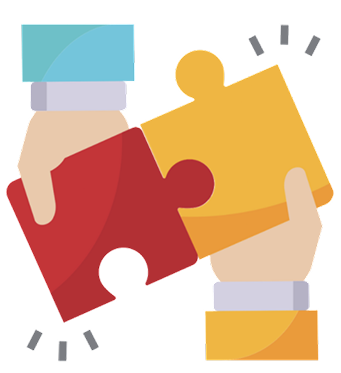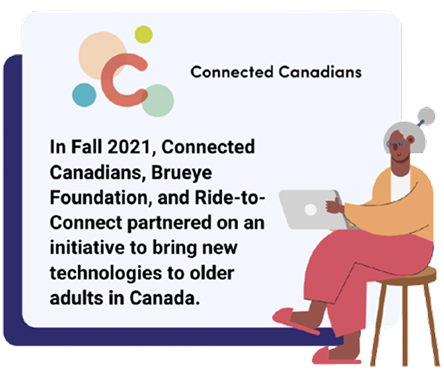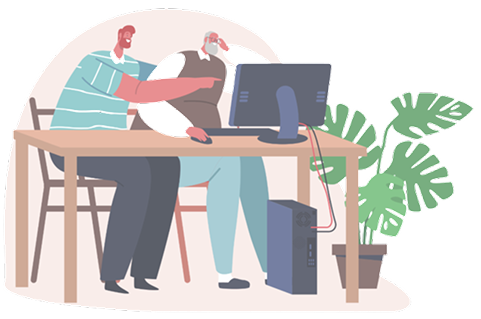Strategies for Fostering Inclusive Intergenerational Digital Spaces

1. Design services and programs that prioritize accessibility and access needs
Service providers can make their programs accessible in the project planning phase. This includes identifying and integrating designs, software, and resources at the beginning of a project to make a program or service accessible to the target audience.

Identify and integrate designs, software and resources

Acknowledge unique needs and provide support

Include accessibility features in event planning checklists
These services can benefit people of all ages by acknowledging their unique needs and providing them with the support to have those needs met.
2. Create technology lending programs
Service providers can build device lending programs into their community projects. This includes initiatives that support the purchase of new devices like IPads.

For example, Connected Canadians provided one-on-one mentorship to our community members so they could get the knowledge needed to navigate their new devices. Older adults were paired with youth mentors who were trained in remotely assisting them with their new devices.
3. Offer affirming and inclusive technology mentorship support
Older adults are more likely to be less informed on the latest devices and new software. To mitigate this challenge, it is important that younger people provide mentorship support to older adults and anyone else who requires education on new technologies.


Youth and older adults can work together to resolve digital literacy and access barriers
Mentorship programs ensure that older adults in general have the support needed to keep up with technological advances
